Physical Address
304 North Cardinal St.
Dorchester Center, MA 02124
![]() For videos accompanying this chapter see ExpertConsult.com. See inside cover for access details.
For videos accompanying this chapter see ExpertConsult.com. See inside cover for access details.
The terms “A” and “V” pattern describe horizontal strabismus that is vertically incomitant. It is characterized by a substantial difference in the horizontal deviation between the midline upgaze and downgaze positions. A patient with a V pattern is more esotropic or less exotropic in downgaze than upgaze ( Fig. 83.1 ); an A pattern is characterized by the converse ( Fig. 83.2 ). By convention, the difference between upgaze and downgaze must be 15 prism diopters (PD) or greater to diagnose a clinically significant V pattern, and 10 PD to diagnose an A pattern. Less commonly, there are variations of pattern strabismus in which there is minimal change from downgaze to the primary position, but the eyes diverge in upgaze resulting in a “Y” pattern. The girl shown in Fig. 83.3 and ![]() was first diagnosed with this motility pattern at 3 years of age. I have continued to care for her for 41 years and her motility is unchanged. She is symptom-free without treatment.
was first diagnosed with this motility pattern at 3 years of age. I have continued to care for her for 41 years and her motility is unchanged. She is symptom-free without treatment.
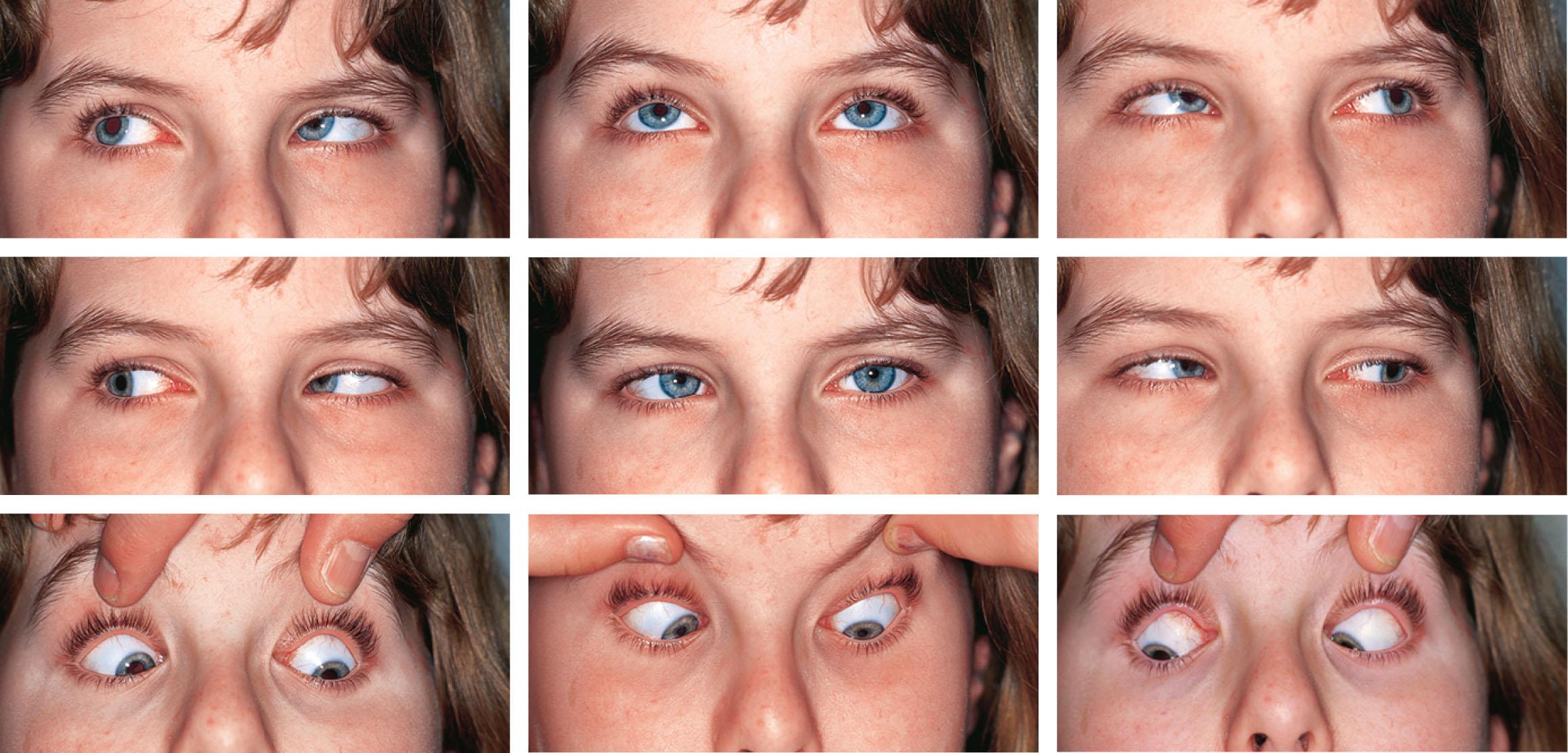
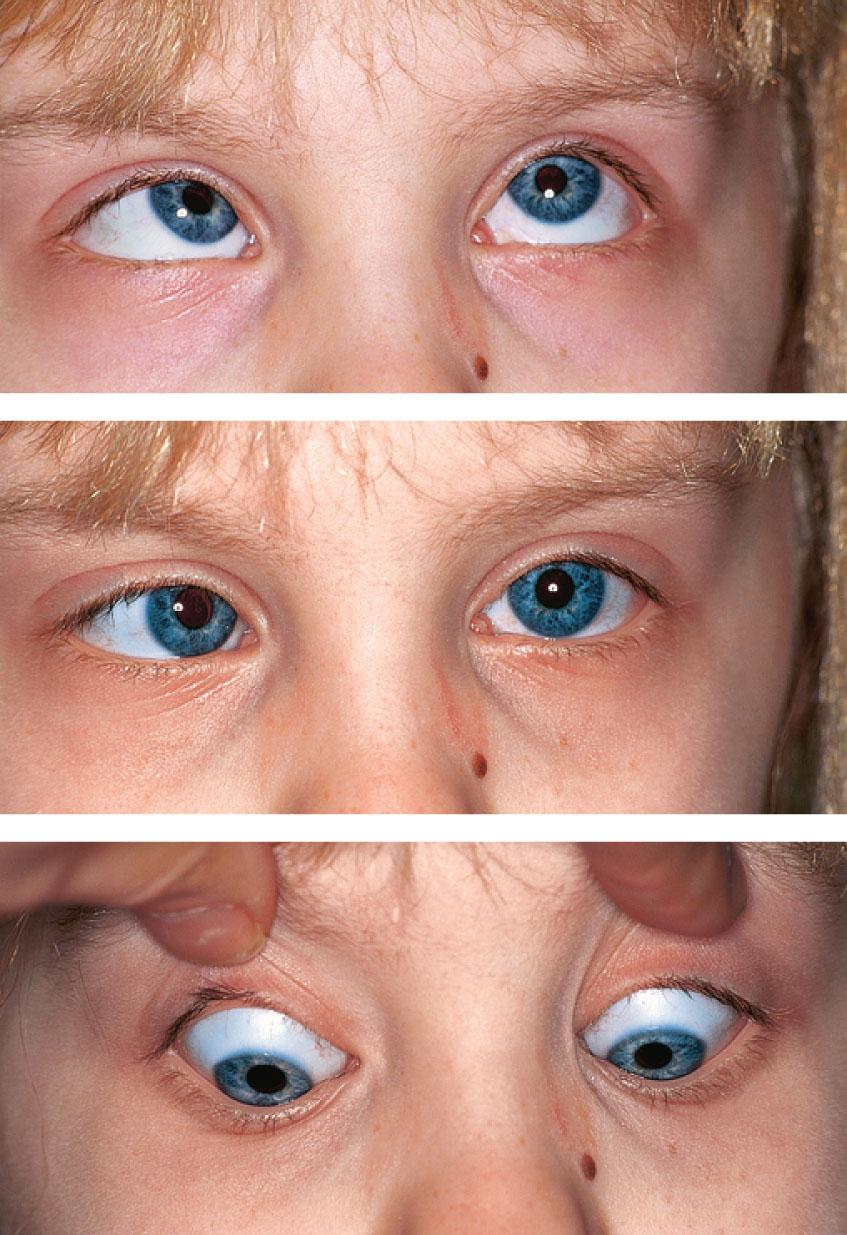
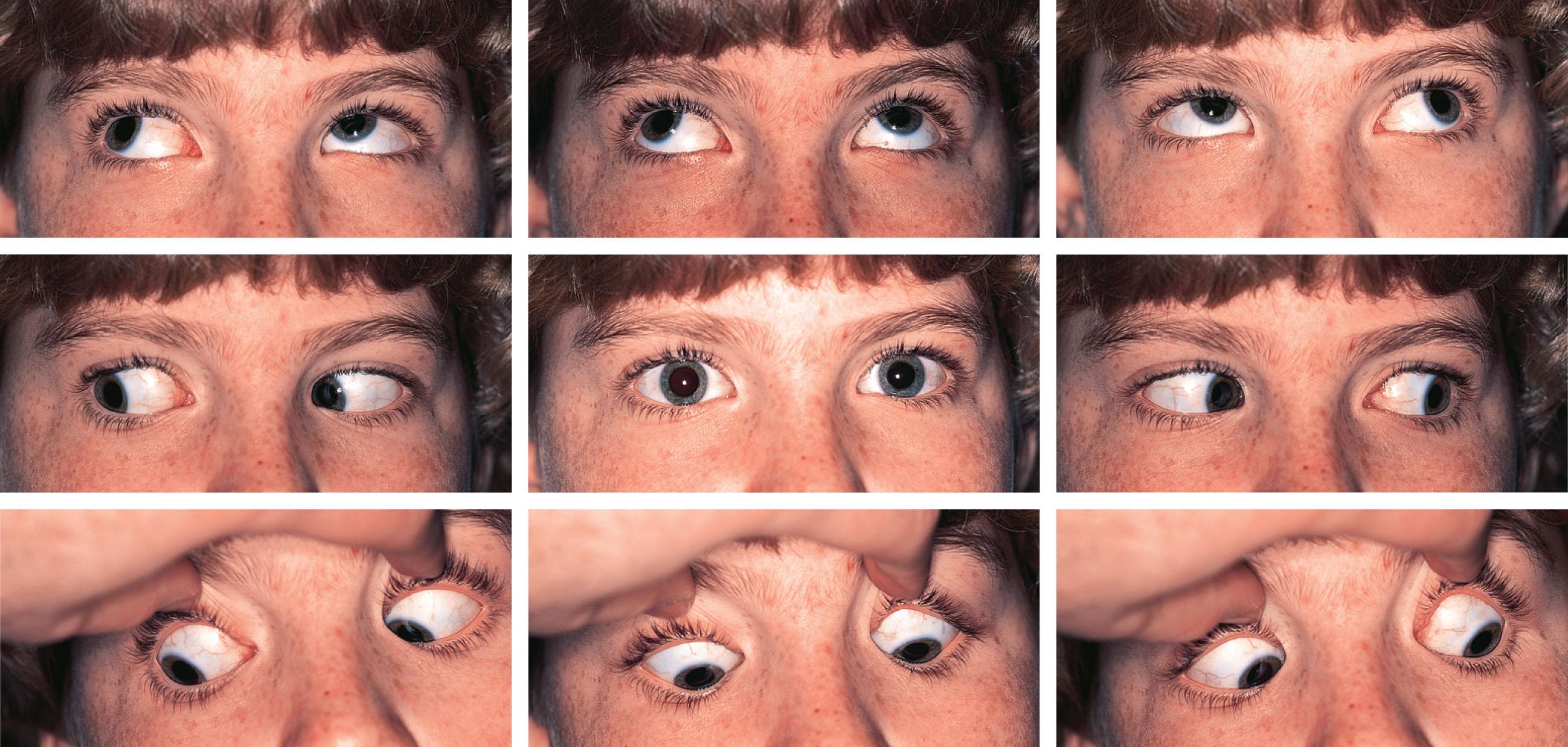
Converse to a Y pattern, the main exo shift may be between the primary position and downgaze to form a “λ” (lambda) pattern.
Duane first described a V pattern in 1897 in a patient with bilateral superior oblique palsy. Subsequently, little attention was given to the importance of measuring the angle of strabismus in upgaze and downgaze until Urrets-Zavalia described vertically incomitant horizontal strabismus in 1948. Urist brought the A and V patterns into the English literature in 1951.
Estimates of patients with strabismus having an A or V pattern range from 12% to 50%. The wide range is because ethnic and systemic factors influence the incidence of pattern strabismus and the make-up of each series. In one series of 421 patients with A or V patterns, 58% had an onset of strabismus prior to 12 months of age. A or V pattern strabismus occurs much more frequently in congenital or paralytic strabismus than in non-paralytic acquired strabismus. Brown syndrome (see Chapter 82 , Fig. 82.5) characteristically has a V pattern, differentiating it from inferior oblique palsy, in which an A pattern is found. Duane syndrome often presents with a V or Y pattern, and less commonly an A or λ pattern (see Chapter 82 , Fig. 82.9). A patterns with overdepression in adduction are frequently seen in patients with spina bifida and/or hydrocephalus with a 31% incidence having been reported. The frontal bossing which children with hydrocephalus develop, may result in anterior displacement of the trochlea, mechanically enhancing the vertical vector of the superior oblique tendon with strengthening of the depressing action of the superior oblique. However, the exact mechanism that causes A patterns to occur with hydrocephalus is unclear.
There are differing theories as to the etiology of A and V patterns, in part because different mechanisms may be responsible in different patients.
The most popular theory, suggested by Knapp in 1959, attributes most cases of A and V pattern to oblique muscle dysfunction. Abduction is a tertiary action of the oblique muscles. Thus, if the inferior obliques are overacting and the antagonist superior obliques are underacting, one would expect a relative convergence in downgaze and divergence in upgaze, resulting in a V pattern. The converse occurs if the superior obliques are overacting and the inferior obliques are underacting, resulting in an A pattern. One typically finds the oblique muscles to be dysfunctional in this manner in most patients with pattern strabismus. This clinical observation, combined with the theoretical construct, has led to the justified implication of oblique muscle dysfunction as a cause of many A and V patterns.
The torsion that accompanies oblique muscle dysfunction should theoretically cause or contribute to A and V patterns. Patients with a V pattern typically have excyclotropia, which is most likely secondary to the accompanying inferior oblique overaction. This excyclotropia results in rotation of the rectus muscles ( Fig. 83.4 ). The superior rectus muscles would become partial abductors and the inferior rectus muscles partial adductors, which will contribute to a V pattern. The medial rectus muscles also have elevating force vectors and the lateral rectus muscles depressing force vectors, contributing to the elevation seen in adduction with overacting inferior obliques. I believe, however, that torsion is only a minor contributing cause of pattern strabismus rather than the main cause. Several observations support this belief. First, the rise or fall of an eye with oblique muscle overaction, as it moves into adduction, is curvilinear. The boy seen in ![]() has primary inferior oblique overaction. The rise of each eye on adduction appears to increase exponentially, rather than linearly. If the rise or fall were primarily caused by the change in force vectors of the rectus muscles as seen in Fig. 83.4 , one would expect a linear trajectory. Secondly, surgery like the Harada–Ito procedure that mainly corrects torsion has a negligible effect on the overelevation in adduction in patients with fourth cranial nerve palsy, even when it eliminates the excyclotropia. In addition, it has been shown that objective extorsion may precede the development of overelevation in adduction and a V pattern in patients with infantile esotropia, by as much as several years. If the torsion caused the overelevation in adduction and the pattern, they should occur concurrently. Finally, surgery in the form of vertical transposition of the horizontal rectus muscles that successfully eliminates an A or V pattern will predictably worsen the underlying torsion (see section “Horizontal transposition of vertical rectus muscles” below).
has primary inferior oblique overaction. The rise of each eye on adduction appears to increase exponentially, rather than linearly. If the rise or fall were primarily caused by the change in force vectors of the rectus muscles as seen in Fig. 83.4 , one would expect a linear trajectory. Secondly, surgery like the Harada–Ito procedure that mainly corrects torsion has a negligible effect on the overelevation in adduction in patients with fourth cranial nerve palsy, even when it eliminates the excyclotropia. In addition, it has been shown that objective extorsion may precede the development of overelevation in adduction and a V pattern in patients with infantile esotropia, by as much as several years. If the torsion caused the overelevation in adduction and the pattern, they should occur concurrently. Finally, surgery in the form of vertical transposition of the horizontal rectus muscles that successfully eliminates an A or V pattern will predictably worsen the underlying torsion (see section “Horizontal transposition of vertical rectus muscles” below).
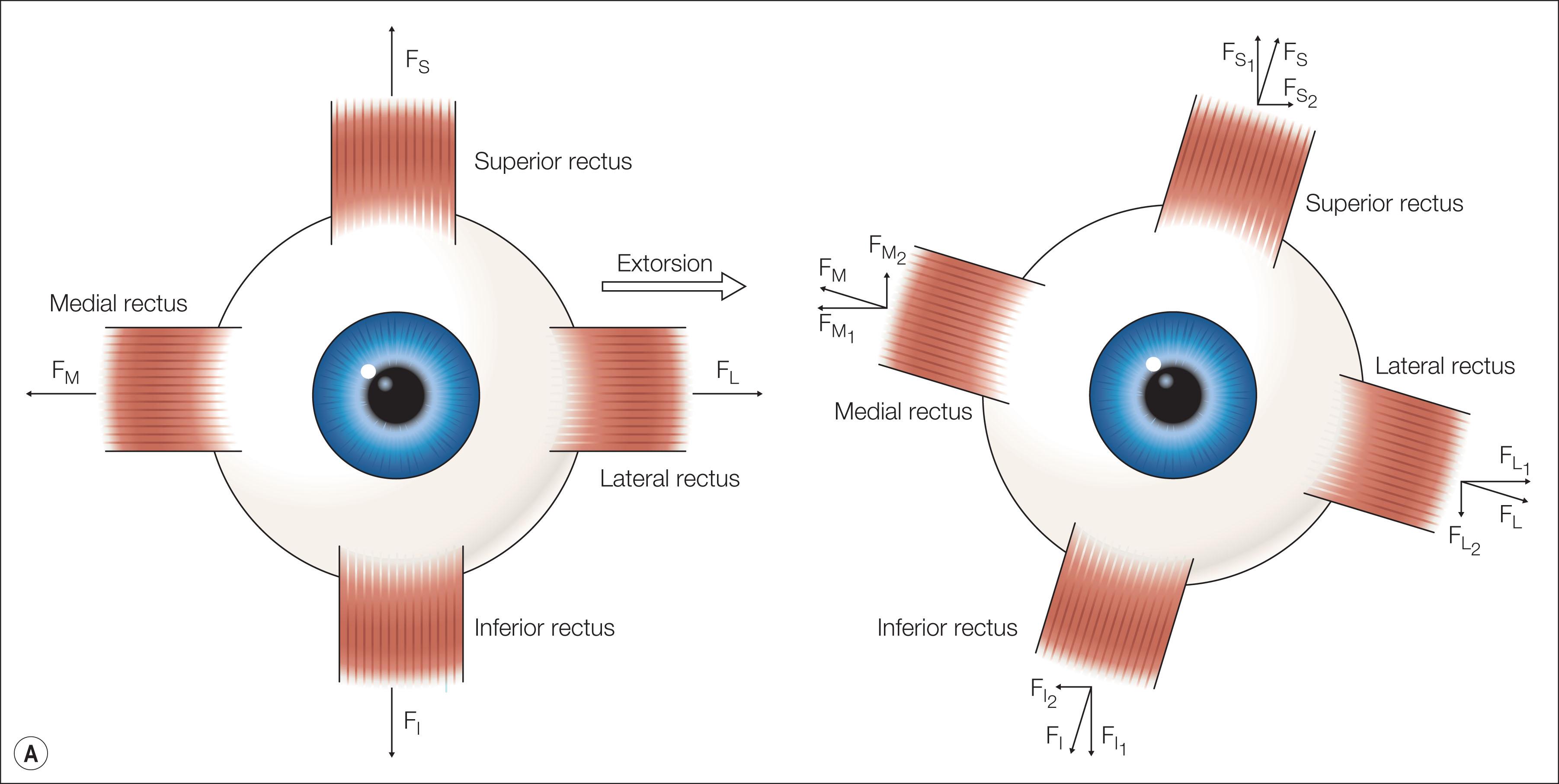
Orbital anomalies are often associated with A and V patterns. In patients with upslanting palpebral fissures, esotropia is frequently accompanied by inferior oblique underaction and an A pattern, and exotropia is frequently associated with a V pattern exotropia and inferior oblique muscle overaction. In patients with downslanting palpebral fissures the opposite occurs. There is also a very high incidence of A and V patterns in patients with craniofacial syndromes ( Fig. 83.5 ). Clark et al. and Demer have attributed some cases of A and V patterns to orbital pulley heterotopia or laxity. This is an evolving concept with no good data as to the frequency that pulley issues are causative of pattern strabismus.
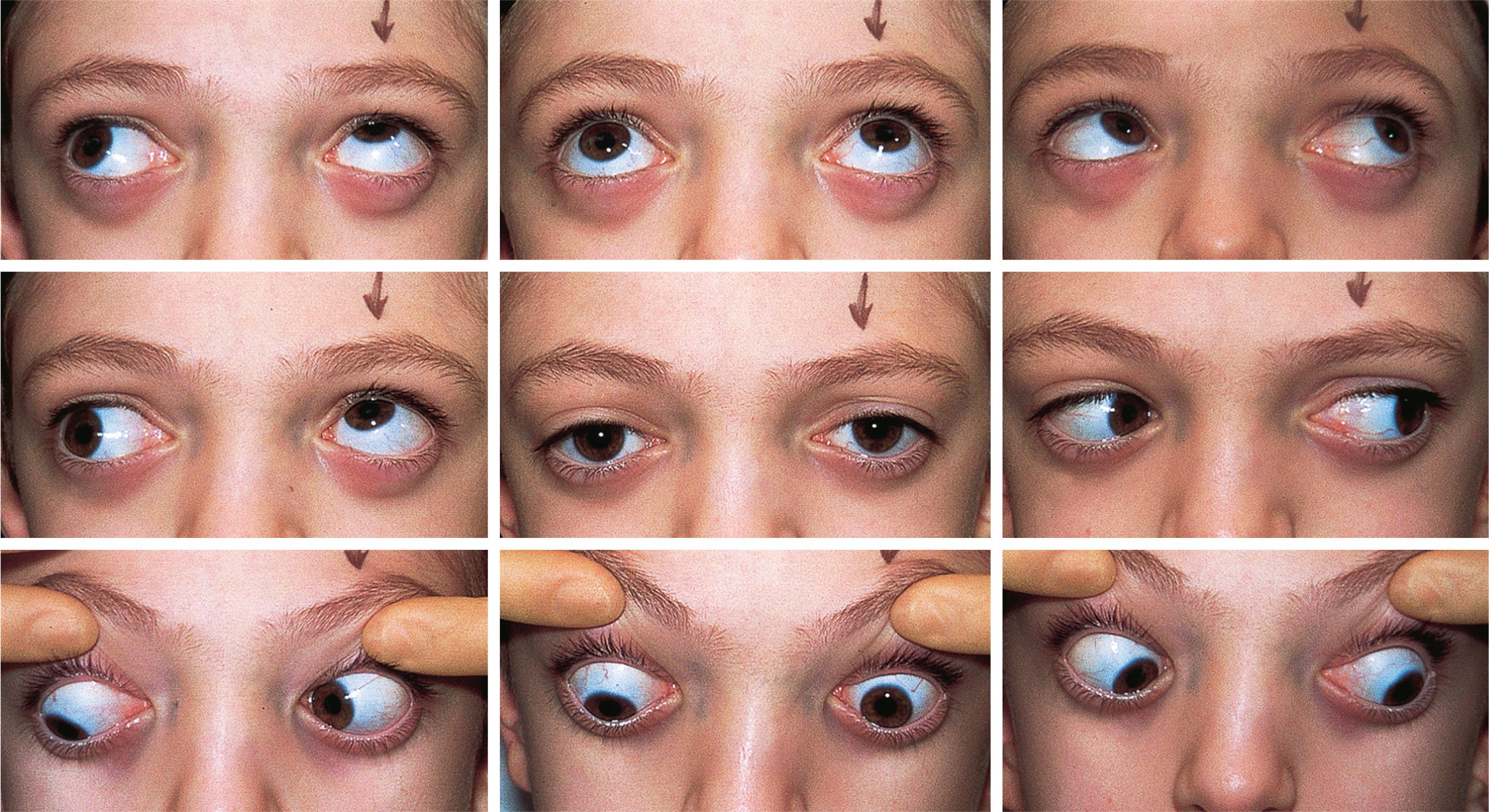
Become a Clinical Tree membership for Full access and enjoy Unlimited articles
If you are a member. Log in here